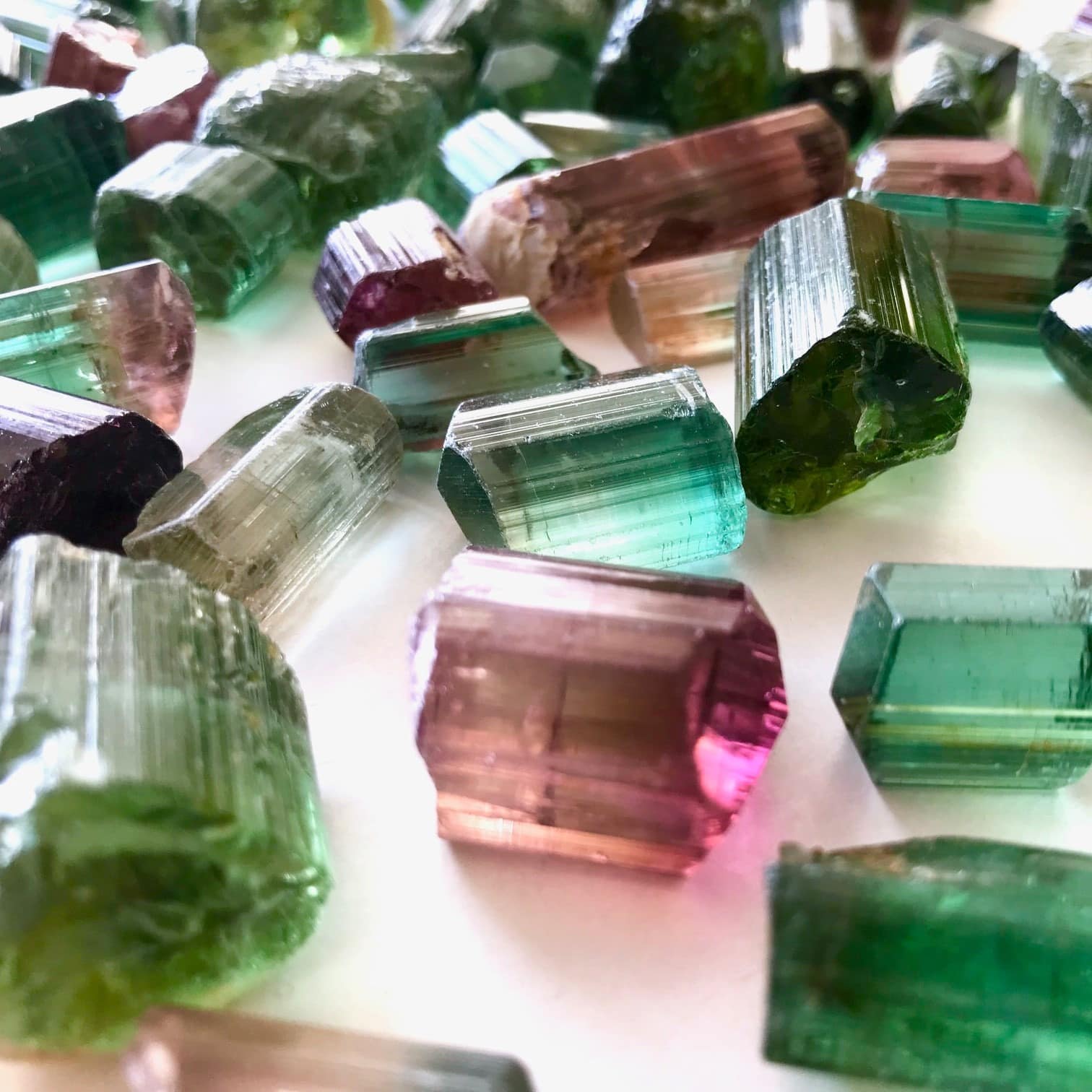A few days ago, I was lucky enough to be invited to attend a course at the École des Arts Joailliers, a place founded six years ago thanks to the support of the Van Cleef & Arpels jewellery house and located a stone’s throw from Place Vendôme, on Rue Danielle Casanova.

Choosing your colours and putting them on the design so as not to make mistakes.
I’ve known about the place for some time now and I’ve already been there several times for presentations and exhibitions. The last one was about the very nice work of Harumi Klossowska that I enjoyed discovering in January 2017.

The enamel organ with the colour references.

The silver butterfly that will be enamelled during the course. On the right, the enamels chosen for the realization of this one.
This year, the school is offering several new courses in France, but also abroad with the opening of courses in Dubai. I had the opportunity to participate in a course on enamelling with the two teachers in charge of it: Isabelle Delahaye and Marie Oberlin, enameller at the Monnaie de Paris, and author of the excellent blog“Les mots des émailleurs” that I find particularly well done and that I can only encourage you to discover!

Enamelling. Enameling.
Four hours of work, that’s what I have to do. Four hours that will pass very quickly between a historical presentation of enameling and the different techniques, then a practical enameling exercise on a silver piece provided by the School to better understand it. The first thing to note is that if you are a bit manual, it is easier. If not, the two teachers are very attentive to the difficulties encountered and will give you all the help you need.


In the oven for the first firing. It will take several firings to obtain a correct result.
But before enamelling, let’s take a look at the history of the process. Enamel is a coloured or transparent vitreous layer applied to a support which can be clay, steel or a precious metal. To obtain enamel, you need a very special sand, resulting from the erosion of quartz-type rocks and therefore very rich in silica. This type of sand is found in the Fontainebleau area, for example. Then, fire is needed, and more precisely three fires:
-the first fire brings sand, flux and sodium to more than 1000°. Once melted in a crucible, the latter is picked up and then cooled down brutally, thus causing a brutal vitrification. A glass frit is then obtained.
-the second fire consists of melting the glass frit with lead (for brilliance) and metallic oxides (for colour). Titanium oxide for the blue, manganese for the green, chromium for the red, etc. Brought to more than 1000° again, we obtain the enamel syrup which comes out of the oven at 1500°. Liquid, it is placed in the form of cakes on cooling tables. It is then crushed, first into granules, then into powder.
-the third fire is the one we will use in the course. It is the one which at 850° reveals the colour on the glazed support.

A first firing and holes everywhere. It is time to add more material before a second firing.
There are several types of enamels: champlevé, cloisonné, plique-à-jour, painted, grisaille and paillonné. The course allows the student to practice two techniques: champlevé and plique-à-jour, which is certainly one of the most famous techniques for its “stained glass” result often used during the Art Nouveau movement.

After the second firing on mica sheet.
I really liked this course, I learned a lot of things especially as enamelling is not my original profession. Of course, with a manual training and an almost daily practice of a craft, it was a little easier for me to apprehend this morning. You don’t become an enameller in four hours, but it’s a great way to discover a technique before eventually taking courses to train yourself in a more advanced way in this craft.

After I stone my piece to remove the residue and a third enamelling, the result is not too bad.
The four hour course costs 200€ and I found that this is not excessive considering the density of the course. You can register online on the school’s website. What’s more, each participant leaves with his or her own enamelled piece and the feeling of having achieved something. This is not always the case in a short course of this type. I think it’s a nice gift to give to someone who is passionate about jewellery, but also a nice moment of sharing to offer yourself. The place is very beautiful, calm and even inspiring. Like a necessary parenthesis!
See you soon






